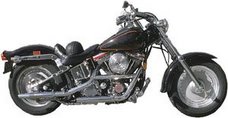Coating Exhaust Manifolds
Exhaust manifolds can either be a cast iron, factory-type manifold or a tube steel header typically used in performance applications, though they are becoming very common in OEM applications. There are a variety of reasons for coating an exhaust manifold header. #1 Corrosion protection. The manifold will live longer as well as look nicer. Whether it is for performance or show, coating an exhaust manifold is valuable to you. #2 The coating is a thermal barrier, thus keeping heat within the manifold or header. There are a number of benefits for this. First, by keeping heat within the manifold, you're going to accelerate the exhaust gas velocity which reduces back pressure and reduces fuel contamination due to reversion. This is a performance benefit. Second, you'll reduce the surface temperature of the manifold. This means if a person comes in contact with it, they are less likely to be burned and leave skin behind. If there is a component close to it, it will not see as much heat as it would with an uncoated manifold. In addition, not as much heat will be radiated under the hood or into the engine compartment. This reduces the underhood temperature which, again, reduces the temperature of surrounding parts, such as, alternators and starters. It also reduces the amount of heat that can be drawn in through the carburetor, which is a secondary performance benefit. There are a variety of coatings that can be used on exhaust manifolds or headers.
The most popular is our Cermakrome. This gives a near-chrome finish, tremendous corrosion protection and is an excellent thermal barrier. On the stock side, our Color-guard Cast Iron is extremely popular, especially with restorers, since it imparts an original, dark cast iron appearance rather than the lighter appearance that is more typical of a bead-blasted finish, which is not truly stock. If someone prefers a lighter appearance, they can mix our Colorguard Cast Iron with our Colorguard Aluminum to arrive at a shade they prefer. Both of these coatings have good thermal stability and are good thermal barriers. We recommend on cast iron, due to it's porosity, that a base coat of Cermakrome be put down first, then bake, then lightly sand blast, then put the color you wish on top. For tube steel headers, you can use our Cermakrome, Colorguard over a base coat, Black Satin, WBX, or WBLX. In most cases a single coating is acceptable. In extreme cases it might be advisable to use a base coat, such as our HHBK with a top coat such as Black Satin or WBX. In addition, you can put down a base coat of the HHBK, top coat it with WBX, and top coat that with our Cerma Clear, creating a glossy black finish that has very good high temperature stability.
We also manufacture an insulating base coat for performance applications where Cermakrome is desired. This is our MCS coating. This can be applied to the outside of the exhaust manifold or header, cured, lightly sand blasted, then a layer of Cermakrome applied over it, cured and polished. This will impart higher temperature capability allowing Cermakrome to be run on 9 to 1 motors, which typically have an extremely hot exhaust gas. MCS can also be used inside of a header to reduce the amount of heat that is transfered into the metal of the header itself. MCS is an extremely effective thermal barrier. Use TLHB on chrome headers to reduce blueing. The end result of a coated manifold or header will be better performance, better appearance, reduced corrosion which means long-term improvement in appearance and will reduce component and underhood temperatures.
More information can be found at http://www.engineceramics.com/
Friday, June 22, 2007
Subscribe to:
Post Comments (Atom)


No comments:
Post a Comment